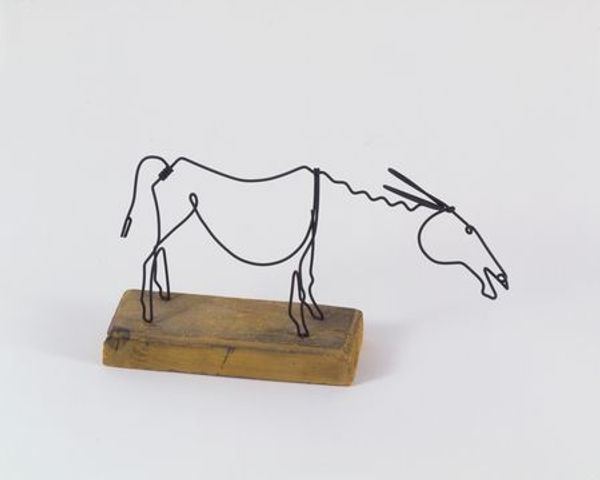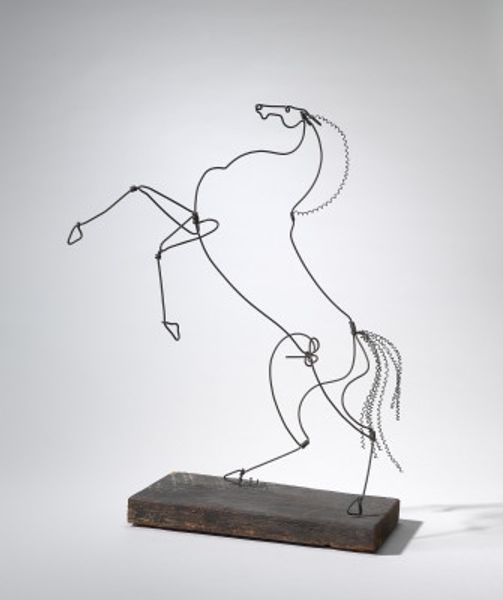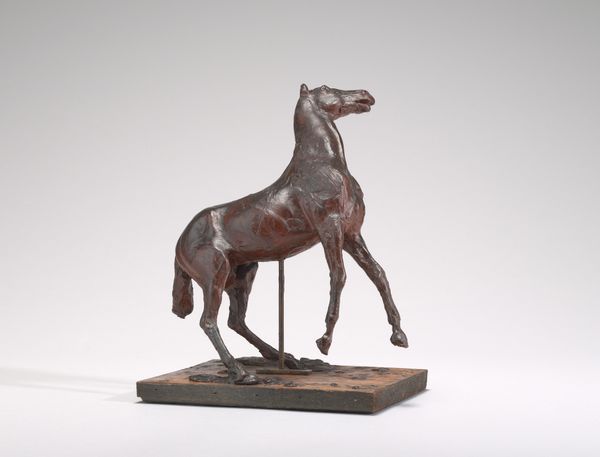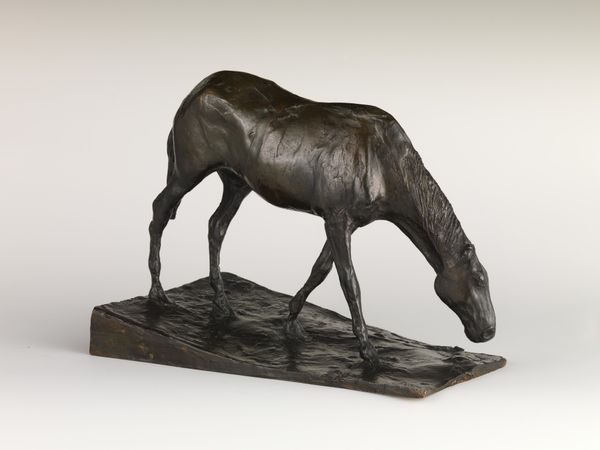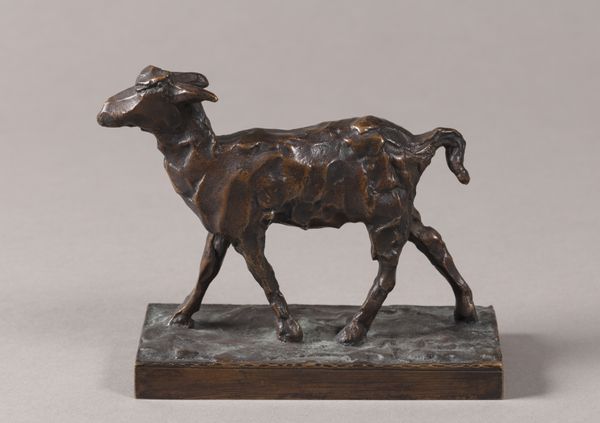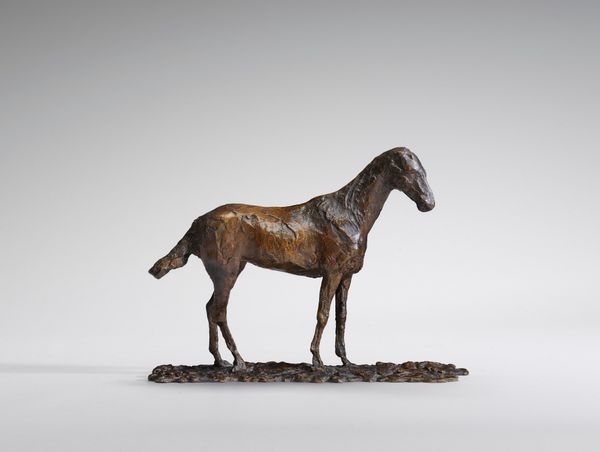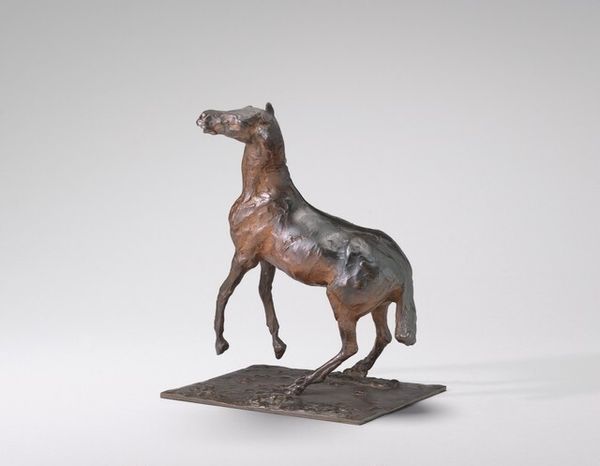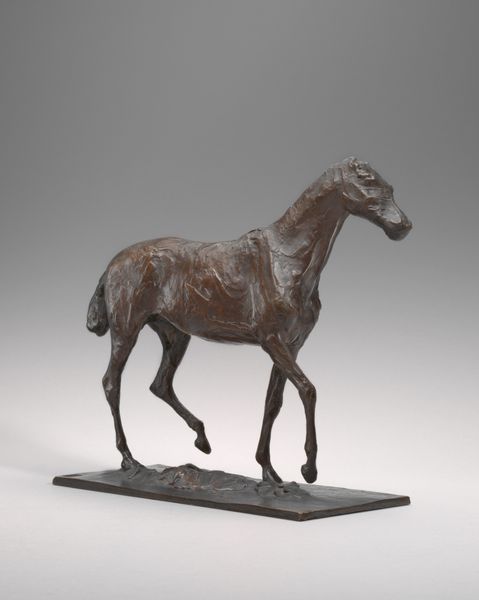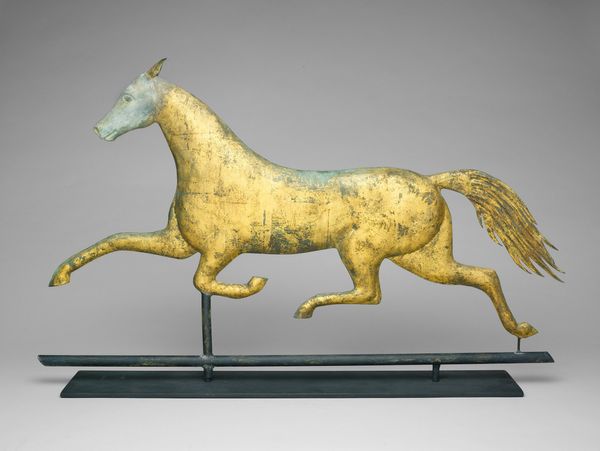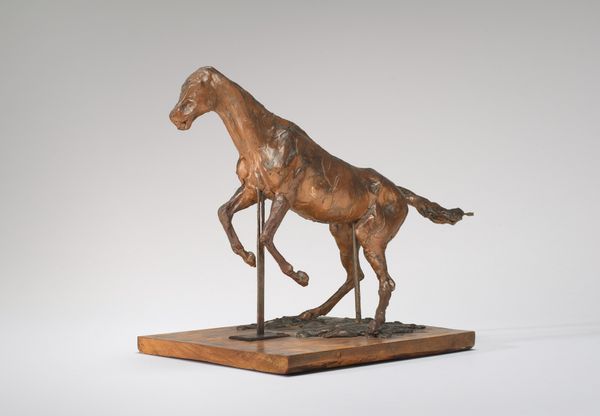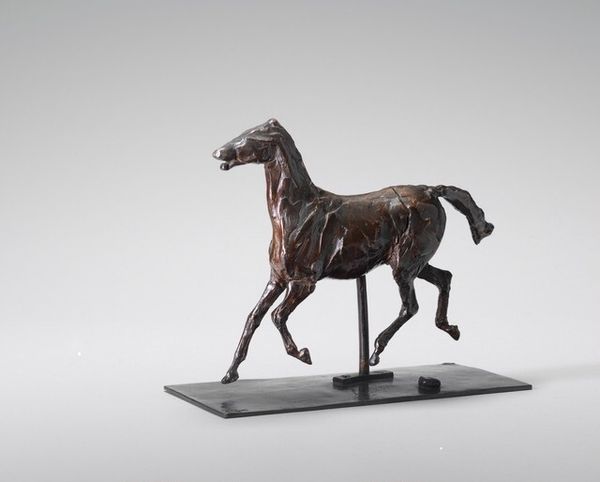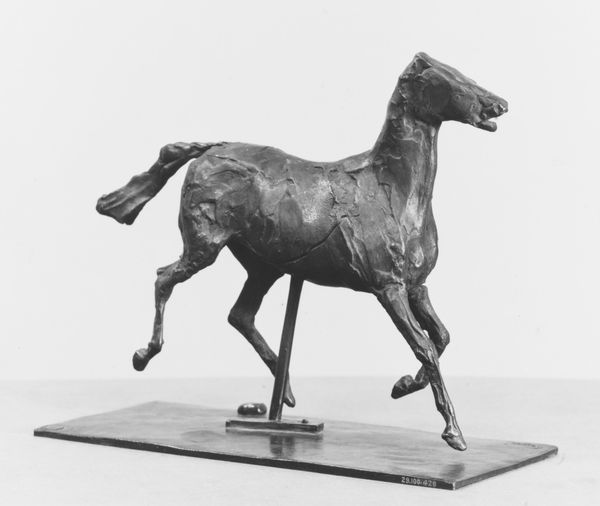
metal, sculpture, mobile
#
metal
#
constructivism
#
sculptural image
#
figuration
#
form
#
sculpture
#
mobile
#
horse
#
line
Copyright: Alexander Calder,Fair Use
Editor: Here we have Alexander Calder's "Horse" from 1928, a sculpture rendered in metal. It's striking how minimal it is – just lines defining the form. How do you interpret this work in the context of its time? Curator: What strikes me about Calder's "Horse" is how it challenges traditional sculptural form. We often see figuration – especially animal representation – rooted in ideas of mass, presence, power. Here, it is the opposite. What does it mean to define this animal form using primarily line, especially at the historical moment when the boundaries of visual representation were being radically contested? Consider the rise of abstraction and the questioning of established power structures. Does the subversion of material relate to a subversion of social narratives about animals and labor? Editor: That’s fascinating. So, by reducing the horse to its essential lines, is Calder also stripping away some of the symbolic baggage that usually comes with it? Curator: Exactly. Think about the horse throughout art history, it symbolizes labor, war, status… Here, what is emphasized, and what is deemphasized? How does the industrial material impact that reading? Calder engages with Constructivism and its emphasis on material, process, and the social role of the artist. Are we invited to reconsider our relationship with this powerful animal in an increasingly industrialized society? Editor: I see it now. The wireframe aesthetic embodies an era defined by machines and the rise of industry. Curator: Yes, and the choice of line reflects a kind of artistic 'drawing in space' -- democratizing what could and should be considered 'sculpture' at that time. A radical reimagining of what sculpture could be, connecting artistic exploration with broader societal shifts. What does that provoke in you? Editor: It really changes my perspective; it is like the sculpture invites us to reconsider what it means to represent reality, what it means to create a sense of form. It also inspires further thinking about materials, society and our perceptions. Curator: Indeed! The dialogue between art, history and material, reveals how cultural assumptions and traditions were being challenged, redefined and reformed.
Comments
No comments
Be the first to comment and join the conversation on the ultimate creative platform.
